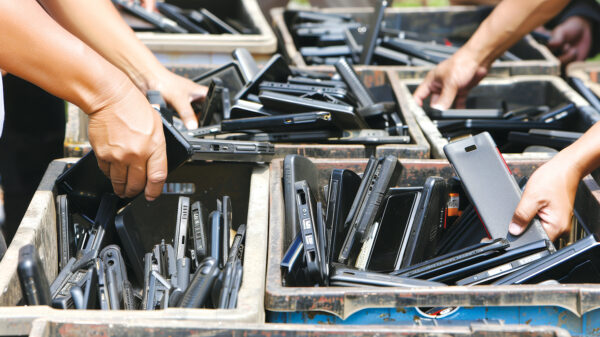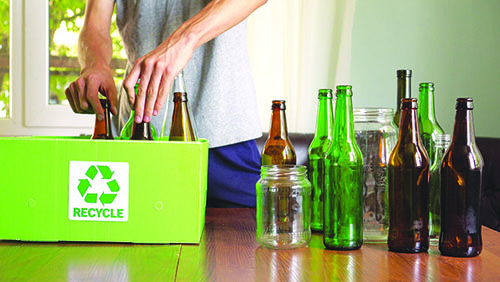by DONNA CURRIE
MSS Inc. got its start in 1974, when it was founded by two graduates from Vanderbilt University, according to Felix Hottenstein, the sales director for the company. The initial products focused on metal recovery, but in the late 1980s, they also started making optical sorting equipment that uses near-infrared and color spectroscopy and can sort a wide variety of materials.
Originally from Switzerland, Hottenstein got his start with the company shortly after he graduated from college with a degree in material science. Originally, he worked for a distributor of MSS products in Switzerland, then he joined the company itself in the U.S.
In 2003, the company was acquired by the CP Group, and operates as a subsidiary of that company. While CP Group is more focused on MRFs, MSS focuses on optical sorters that are designed for e-waste companies. However, MSS also makes sorters that are sent to the CP Group for use in their products. MSS remains a small company with about 25 employees, while the parent company employs about 200.
Hottenstein explained that the same optical sorters can be used in many different industries to sort a wide variety of materials, whether the customer needs to remove contaminants from paper streams or they’re sorting metal from plastic and circuit boards.
For the e-waste industry, MSS offers two different types of sorter technology. Induction based sorters function like very sophisticated versions of the metal detectors that people use to find metal items on beaches, but in this case they’re looking for metal in waste or recycling streams.
The camera based sorters can detect items based on color or shape, so specific items can be targeted, no matter what material they’re made from.
While there are differences in how the materials are detected, the general process is the same. The material is usually shredded and sized, because it’s easier to sort smaller pieces. Then, the material is spread out, thanks to a vibrating feeder, onto a wide conveyor that might be anywhere from 32 to 112 inches wide. Moving at 500 feet per minute or 100 inches per second, the camera or induction detector is at the very end of the conveyor, where material comes off the belt. The sensor identifies the material as it passes by, and air jets “know what particles have been targeted.” The air jets move the unwanted materials out of the streams with no intervention by human hands.
In the 20 years Hottenstein has been with the company, he’s seen a lot of changes. He said that “there are always two sides” that have driven improvements to the company’s products. First, technology is always improving, with faster computers and better sensors that can be integrated into the equipment. That technology has helped improve the ability to sort materials for recycling.
The second side is the market side. “The recession made a dent for everybody,” he said, but the last 18 months has driven U.S. recyclers to improve the sorting at their own facilities. “China closed the doors to contaminated products,” Hottenstein explained, so “U.S. companies had to step up their game.” Because of that, MSS saw a large increase in the sale of their equipment in the U.S.
Looking to the future, Hottenstein said that the U.S. is far behind Europe when it comes to recycling and “the industry has a long way to go.” Meanwhile, sorting equipment that was installed 5 to 10 years ago may be in need of upgrades. Companies that are using manual labor to sort materials are looking for automated systems, since it’s getting difficult to find people to fill those jobs. Humans are not as reliable as machines when it comes to sorting, and there’s always the concern about on-the-job injuries.
He feels that the future is bright when it comes to e-waste recycling, since people are buying more and more electronic gadgets that eventually will need to be recycled. “The driver is the metals,” Hottenstein said. “That’s where the value is.” While many electronics are being recycled, “the problem is collection,” and there are plenty of electronics that are never recycled.
Hottenstein particularly enjoys visiting customers to see what they do, and then finding ways to improve their processes. While the sensors that MSS makes are stock items, the entire build is “heavily customized” because of the conveyors and other required equipment that complete the system.
New customers often drive innovation, Hottenstein said, because they may have new materials that need to be sorted. Because of that, MSS spends a lot on R&D. A recent “new material” involved plastic packaging and labels that might not have seemed different to end users, but required innovation when it came to sorting. Hottenstein is sure the company will be ready to help customers with whatever new sorting challenges they bring.
“We’ve been at this a long time,” Hottenstein said. “We know what we’re doing.”
Published in the March 2019 Edition







